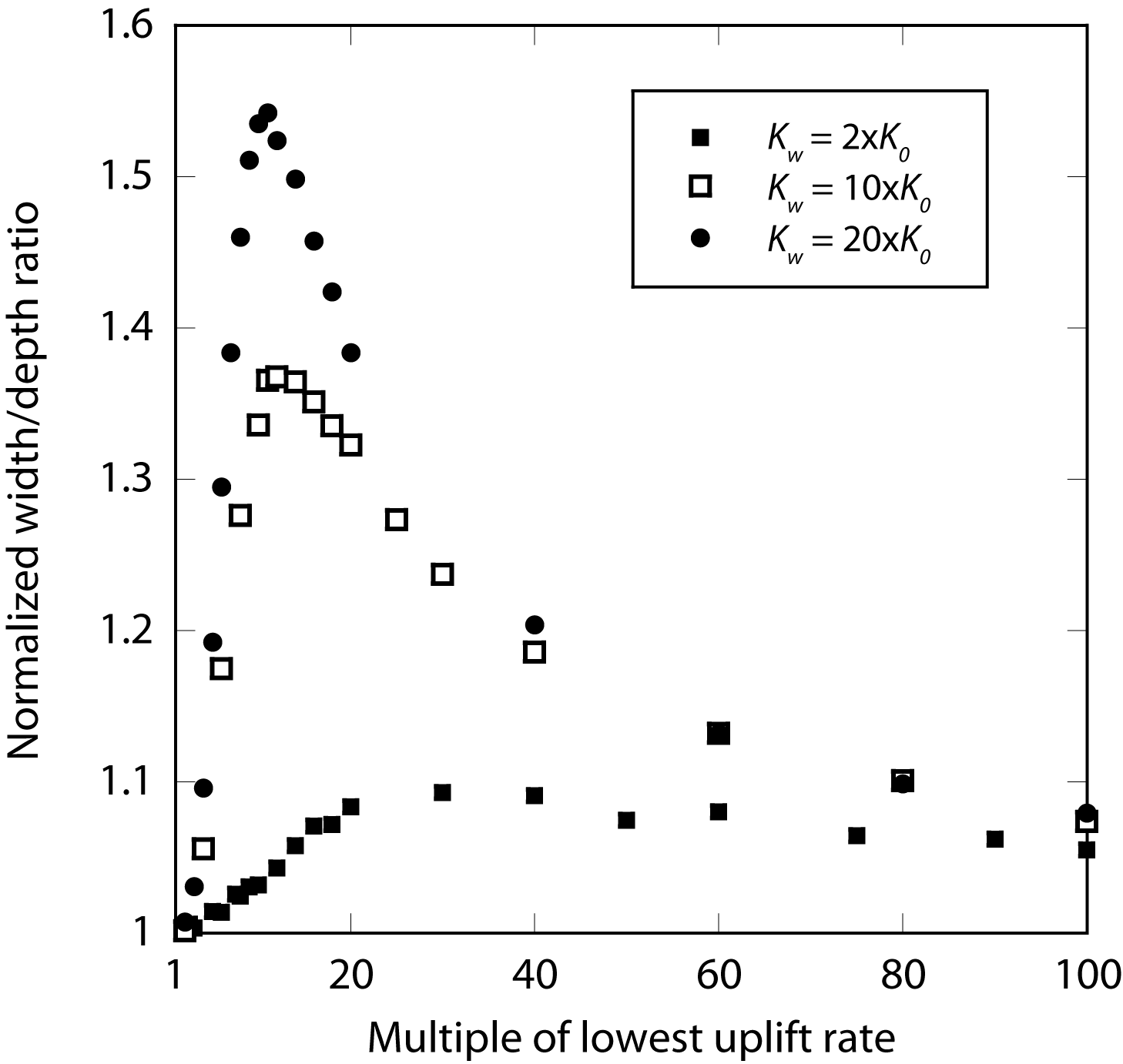« Back to Bedrock Incision Home
Modeling the effects of weathering on bedrock channel geometry and slope
In bedrock channels, the cross-channel distribution of incision and the overall rate of bedrock channel erosion must depend on three factors:
| 1. | the frequency distribution of floods combined with channel gradient and geometry, which translate into a cross-channel distribution of the river's ability to erode; |
| 2. | the distribution of sediment, which can both protect the bed and provide tools to abrade it [Sklar and Dietrich, 2004; Turowski et al., 2007]; |
| 3. | the cross-channel distribution of bedrock erodibility associated with lithologic variability or produced by chemical and physical weathering [Montgomery, 2004; Stock et al., 2005]. |
We use a model of cross-sectional evolution to explore the role of weathering in the evolution of rock-floored channel geometry and slope. The model follows the strategy of Wobus et al. (2006; 2008) to calculate flow hydraulics and to simulate cross-section erosion. Using this model, we address the following question: Are channel geometry and slope significantly different in channels where weathering increases erodibility compared to channels where weathering is negligible?
References
Montgomery, D.R. (2004), Observations on the role of lithology in strath terrace formation and bedrock channel width. American Journal of Science 304: 454-476, doi:10.2475/ajs.304.5.454Sklar, L.S., and W.E. Dietrich (2004), A mechanistic model for river incision into bedrock by saltating bed load. Water Resources Research 40: W06301, doi:10.1029/2003WR002496.
Stock J.D., D.R. Montgomery, B.D. Collins, W.E. Dietrich and L. Sklar (2005), Field measurements of incision rates following bedrock exposure: Implications for process controls on the long profiles of valleys cut by rivers and debris flows. Geological Society of America Bulletin 117(1-2): 174-194, doi: 10.1130/B25560.1.
Turowski, J.M., D. Lague, and N. Hovius (2007), Cover effect in bedrock abrasion: A new derivation and its implications for the modeling of bedrock channel morphology. Journal of Geophysical Research 112: F04006, doi:10.1029/2006JF000697.



